
All categories
Featured selections
Trade Assurance
Buyer Central
Help Center
Get the app
Become a supplier

(4756 products available)






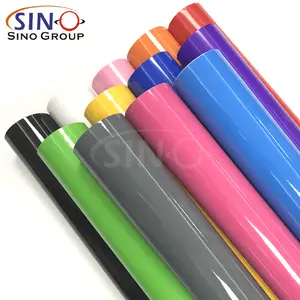






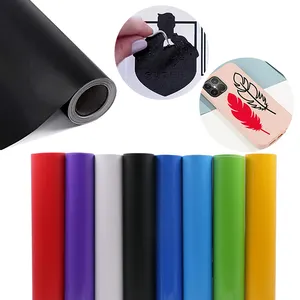






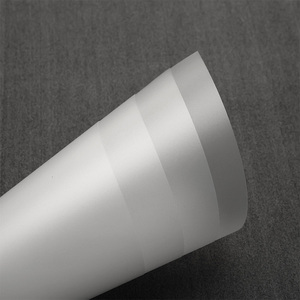

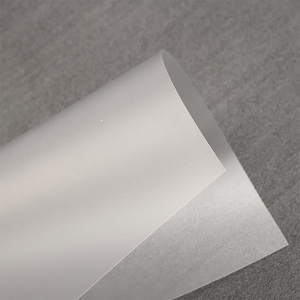


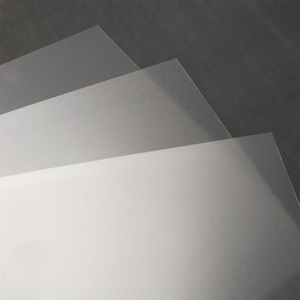






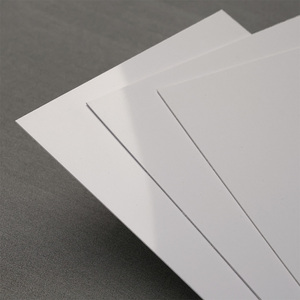













Flexible sheets come in diverse types, each tailored for specific applications. Understanding these types is vital for selecting the appropriate sheet for particular projects, especially in packaging.
Flexible Packaging Sheeting
This is a type of packaging that is thin yet durable. It can be made of plastic, paper, or aluminum foil. Flexible packaging sheeting can be easily folded, bent, or shaped without breaking. This tough material helps keep food fresh for a long time. It is also used to safely carry liquids, medicines, and other delicate products.
Flex PVC Sheet
PVC Flex sheets are made from polyvinyl chloride, a type of plastic that can be very flexible. These sheets are tough and last a long time. They can handle water and don't get damaged by most chemicals. Because of this, flex sheets are good for signs, displays, covers, and wraps. They stay looking nice and don't easily get broken or damaged.
Flex Sheet Vinyl
Flex sheet vinyl is a popular choice for crafting and custom printing. It is a thin, flexible material that is easy to cut and apply. In addition, flex sheet vinyl is widely used for making custom clothing designs, decals, and signs. It is a favorite among crafters because it sticks well to surfaces and comes in many colors.
EPS Flex Sheet
EPS Flex sheets are made from expandable polystyrene foam. It provides both lightweight and durable cushioning. These sheets are very useful in packaging because they protect fragile items during shipping. The Flex EPS sheets will absorb shocks and impacts to prevent any breakages.
Flex Printing Sheet
Flex printing sheets are used for making colorful prints on a special flexible material. This process uses thin sheets of vinyl or other materials that can be printed on. These sheets allow for custom designs to be made, such as logos, graphics, and patterns. These sheets are ideal for printing on t-shirts, stickers, and banners. This is because the prints can easily bend and stretch without breaking.
Outer Layer
The outer layer is the first layer that gets touched. This layer needs to look nice and be strong. It is made of plastic, paper, or metal foil. These materials are great because they keep the things inside fresh and safe from air and water. They also make the package look good with bright colors and designs.
Ink Layer
The ink layer is used to add pretty pictures and words. Special types of ink that won't wash off or fade are applied to this layer. No matter how the package is bent or squished, the designs will stay bright and clear. This helps people see the package and want to buy what is inside.
Polymer Adhesive Layer
This layer helps stick everything together well. It ensures that the outer layer and the ink layer stay attached. Common adhesives used in flexible packaging are polyurethane and acrylic-based glues.
Sealant Layer
This layer works like a blanket keeping everything nice and snug inside the package. It prevents spills or leaks by sealing the edges tightly. Sealants are made from special plastics that bond when heat is applied. They create a strong barrier keeping food fresh for a long time.
Inner Layer
The inner layer is the last line of defense inside the package. It touches the food or product. Just like the sealant, this layer uses sealants made of different types of plastic that are safe for holding food. Examples include polyethylene and polyamide.
Types of flex sheets used for packaging
Flex sheets can also be used to create flexible packaging. This allows for the safe storage of all kinds of food, cosmetics, and dry goods. Some common examples include bags for potato chips, pouches for sliced meats, wraps for vegetables, and packages for pet food.
Flexible sheets are an important part of packaging in many industries. They help keep things safe, fresh, and looking good.
Food Packaging
Flex sheets are frequently used to package different types of food, such as chips, deli meats, fresh veggies, and more. Microorganisms may be kept at bay, and freshness is preserved due to their capacity to properly seal goods. Flexible sheets are also utilized to make pouches, bags, and wrappers that are practical and eye-catching.
Medical Packaging
EPS sheets are commonly used to package medical supplies, such as syringes, bandages, and drugs. It ensures the cleanliness and safety of each item until it is ready to be used. The sheets' capacity to resist sterilization methods like gamma rays is essential to maintaining the products' safety and effectiveness.
Cosmetics Packaging
Flex sheets play a vital role in presenting cosmetics such as creams, lip products, and more. The beauty industry prefers flexible packaging because it enables the containment of liquid products while maintaining an attractive aesthetic. The PVC sheets' flexibility allows for trendy designs that are both appealing and practical.
Consumer Goods Packaging
Flex sheets are largely used to package daily use items like soaps, detergents, and snacks. They are cheap, adaptable, and can be printed on to help brands stand out on store shelves. Flexible packaging is simple to open and dispose of, according to consumers.
Protective Packaging
Flexible sheets serve a key purpose in protective packaging. They safeguard goods like electronics, fragile glassware, and more during shipment and storage. Due to their light weight and resistance to impact, EPS sheets are the perfect material to cushion sensitive items.
Industrial Packaging
Flexible packaging is also beneficial in industrial settings. Polymeric sheets provide a means to package raw materials, component parts, and industrial tools reliably. Due to their robustness and resistance to harsh chemicals, these sheets are able to package challenging materials.
Knowing the specifications and how to maintain flex sheets will make them last longer and work better.
Thickness
Flex sheets come in various thickness levels. The thickness of a flex sheet matches how strong or flexible the job needs it to be. This means thinner sheets are great for wrapping items. While the thicker flex sheets are used for tougher jobs like creating molds or sturdy structures. Their thickness varies, ranging from 2 millimeters to 10 millimeters.
Durability and Tear Resistance
One important feature of flex sheets is how long they last and how well they resist being torn. The materials are chosen to withstand daily use without easily ripping or falling apart. To keep them strong, make sure not to use anything sharp when handling them. Cleaving sharp items can damage the flex sheets.
Waterproofing
EPS foam flex sheets are great because they won't be harmed by water. This means they can be used even on rainy or wet days without worry. It is important to remember that while snow or ice may not hurt them, they should still be cleaned off when they get dirty. Anything that tries to stick to the sheet should be removed so it stays safe and secure.
Heat Resistance
Some flexible sheets can withstand very high temperatures. Heat can sometimes destroy or change the shape of regular sheets. Special materials are used for flex sheets that need to be safe under a lot of warmth.
Stretching and Bending
Flex sheets are made to be very stretchy and bendy. This allows them to change shape easily. The new shape will stay even if the pushing or pulling stops. Some sheets may take longer to return to their original form if they are used a lot.
Cleaning and Repairing
Taking care of flex sheets is easy. To keep them nice, simply wipe with a damp cloth now and then. If they get little holes or scratched marks, special tape or patches can fix the problems. With simple care and repairs, flex sheets will last a long time and continue to help with many projects around buildings and spaces.
To get the most use out of flex sheets, it is vital to check them often. Doing repairs and maintenance lets them last longer and work better.
Material Inspection
At the start, when we get the flex sheet materials, workers look closely at each part. They check for any mistakes or damage. Only the best materials get used.
Thickness Testing
After that, testers check to see how thick the sheets are. They make sure every flex sheet is the correct thickness. If it is too thin or thick, it will not work well.
Pressure Tests
Next, they put pressure on the sheets to see how much force it can handle. They test it to make sure it can bend and stretch without tearing. This ensures it is super flexible.
Glue Strength Checks
The glue needs to be really strong. Workers check how well the glued areas stick together. They test to see if anything comes apart when pulling on it.
Heat Resistance
To be safe, they also see how well the sheets can resist getting too hot. They make sure it works great even under warm conditions.
Toughness Testing
They want to confirm that these sheets are durable. They scratch, bend, and break things to see if it lasts over time.
Sound and Vibration Testing
Flex sheets should not be noisy. They check each one to see if any make sounds when in use or moving around.
Label Checks
Before shipping out packages, workers inspect labels carefully. Each label shares important info like safety notes or how to recycle it later.
A1: Flex sheets are a helpful kind of packaging. They can be wrapped around different products such as food or medicines to keep them fresh and safe. Flex sheets are thin but very tough. They come in many materials like plastic and foam.
A2: Flex sheets can be made from many materials. Some common ones are PVC plastic, polystyrene foam, and polyethylene plastic. Each material has its own special abilities. This allows the flex sheets to be used in different ways.
A3: There are many benefits of flex sheets. They are very easy to recycle. This makes it simple to reuse them when they are finished. Flex sheets are also very strong. They protect items from hurtling or breaking. Plus, they are lightweight which makes them simple to carry.
A4: Printing on flex sheets is done in an easy way. Special inks that stick well to the materials are used. An ink-jet printer or other types of printers can add colorful designs and patterns. This is done without making the flex sheets lose their strength.
A5: Yes, flex sheets are safe for packing food. They are carefully created so that nothing harmful gets inside the food. Plastics like PVC, polyethylene, and polystyrene work great for keeping food protected.